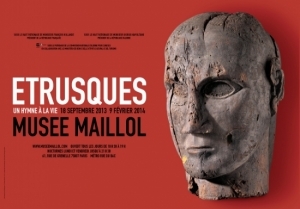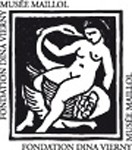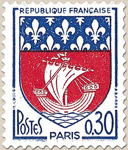Il est un peuple dont on parle peu, trop peu, lorsque l’on pense à l’antiquité. Pourtant les apports de la civilisation étrusque à nos sociétés occidentales sont loin d’être négligeables, puisque ce peuple préexistât et influença de façon profonde la culture romaine. Et lorsqu’on sait la prégnance du monde romain sur notre histoire, il serait dommage de ne pas s’intéresser à leurs aïeux. Et l’on ne pourrait mieux introduire ce sujet qu’avec la phrase de Flaubert, issue de son « dictionnaire des idées reçues », qui assure que ’’tous les vases anciens sont étrusques’’.
C’est pour cette raison que je vous conseil fortement l’exposition actuellement en cours au musée Maillol, qui couvre les vestiges de cette civilisation du IXe au Ier siècle avant J.-C. La péninsule italienne avant sa domination par Rome, et un panaché des productions de ce peuple mystérieux, dont personne encore aujourd’hui n’arrive à expliquer la domination dans le monde méditerranéen. Cette question est d’autant plus difficile à résoudre qu’ils nous restent uniquement les vestiges enfouis dans les sols de Toscane pour y répondre, et comprendre pourquoi l’Etrurie connue une ascension aussi fulgurante, et un déclin aussi rapide (il faudra seulement un siècle à la civilisation romaine pour faire disparaitre sa concurrente).
Peut être pourrez vous déceler un début de réponse dans la collection de peintures, de terres cuites, de bronzes, et de céramiques proposée par le musée Maillol pour cette exposition, placée sous le haut patronnât du président de la république française et du président de la République italienne. Si vous n’y parvenez pas, vous pourrez sans dommages vous laissez porter par la beauté des productions mystérieuses de ce peuple.
The Etruscans: « un hymne à la vie »:
The Etruscans are rarely, indeed too rarely, mentioned when we talk about the Antiquity. Yet the Etruscan civilisation’s contribution to our Western societies is far from negligible, as this people pre-dated the Roman culture over which it had a significant influence. And given the dominance of the Roman world on our history, it would be a shame not to take an interest in their ancestors. And how better to introduce this topic than with Flaubert’s words, from his « dictionary of conventional wisdom », which confirmed that « every ancient vase was Etruscan ».
This is the reason why I would strongly recommend visiting the exhibition currently being shown at the Musée Maillol. It showcases the remains of this civilisation which developed from 9th to 1st century B.C. on the Italian peninsular before it was dominated by Rome, and an array of works by this mysterious people whose domination of the Mediterranean world has still to be explained. This question is all the more difficult as the only remains that we have to help us understand why Etruria had such a blinding success and such a quick decline (it took the Roman civilisation only one century to wipe out its competitor) are those buried in the Tuscan earth.
Perhaps you may detect the beginnings of an answer in the collection of paintings, earthenware, bronze works and ceramics presented by the Musée Maillol for this exhibition, organised with the support of the French and Italian Presidents. If you don’t manage to, there is no harm letting yourself be carried away by the beauty of the mysterious works of this people.
Didier MOINEL DELALANDE







